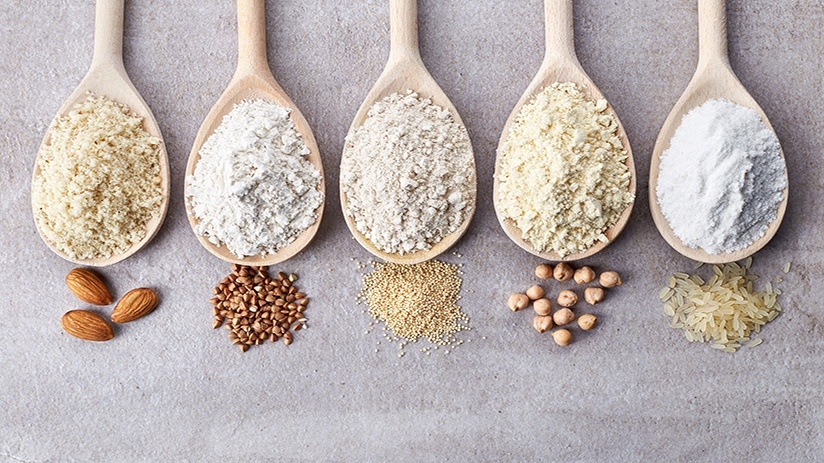5 Types of Gluten-Free Flour
October 02, 2018 | Food Lion


Wheat flour traditionally gets most of the flour-related attention when it comes to ingredients for baked goods, but baking with wheat flour isn't an option for people with Celiac disease or gluten intolerance.
The good news is that there are excellent gluten-free flour options for bakers who need to avoid wheat flour. Let's take a moment to shine the spotlight on a few of the available options.
Almond Flour
As you may have guessed, almond flour is made from ground almonds, which makes it a nut flour rather than a grain flour. It's a popular choice for cookies, breads, muffins, and other types of baked goods.
Chickpea Flour
Made from ground chickpeas, chickpea flour (also known as gram flour or garbanzo bean flour) is nutrient-packed and noted for its good texture. It's a widely used wheat flour alternative (usually when blended with other flours or starches).
Oat Flour
It's tasty and it's popular, but there's one caveat. In and of itself, oat flour is gluten-free, but you must be certain that the product is certified gluten-free because cross-contamination of oats can occur during the harvesting process. As long as you choose a certified product, oat flour can be a nice substitute for wheat in many recipes.
Sorghum Flour
Sorghum flour is hailed by many as one of the best options for gluten-free baking due to its taste and texture. It's often combined with millet flour, coconut flour, tapioca starch, and/or potato starch to achieve the desired effect in baked goods.
Buckwheat Flour
Two words: buckwheat pancakes! And no, despite what the name implies, buckwheat is not related to wheat and does not contain gluten. It's not a cup-for-cup substitute for wheat flour, but buckwheat flour can be an excellent choice when used in conjunction with other gluten-free flours.
Other Gluten-Free Flours to Explore
Once you start experimenting with gluten-free flours, it opens up a whole new world of options for individuals on a gluten-free diet. In addition to the five flours described above, you may also want to learn more about these additional gluten-free flour options:
• Quinoa flour
• Millet flour
• Coconut flour
• Potato flour
• Brown rice flour
Three Things to Remember When Using Gluten-Free Flour
Before you begin replacing wheat flour with alternative gluten-free flour(s) in your baking endeavors, consider these points:
Gluten-free flour doesn't behave in the same way as wheat flour. That's because wheat flour contains gluten, which provides elasticity and acts as a binding agent. Gluten-free flour lacks gluten (obviously), and this affects the texture and consistency of baked goods. To compensate for the lack of gluten, you may need to make adjustments to the liquid/flour ratio of your ingredients, or add a binding agent such as xanthan gum or guar gum.
Cup-for-cup replacements may not work. It would be nice if you could simply replace a cup of wheat flour with a cup of gluten-free flour in your favorite recipe, but this rarely produces acceptable results. You may need to experiment with a few different variations and ratios in your recipe to achieve success. (Tip: Depending on the type of gluten-free flour that you're using, you may be able to add flax seed and/or eggs to create a better texture in your baked goods.)
Gluten-free flour blends may be the best choice. To achieve the best gluten-free baking results, many experts recommend using a flour blend—a mix of gluten-free flours designed to more closely simulate traditional wheat flour—to produce more consistent results. You can purchase flour blends or mix your own.
Are you ready to start baking? Have fun!






Create Your Display Name